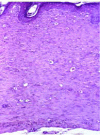Wound healing - A literature review
- PMID: 27828635
- PMCID: PMC5087220
- DOI: 10.1590/abd1806-4841.20164741
Wound healing - A literature review
Abstract
Regeneration and tissue repair processes consist of a sequence of molecular and cellular events which occur after the onset of a tissue lesion in order to restore the damaged tissue. The exsudative, proliferative, and extracellular matrix remodeling phases are sequential events that occur through the integration of dynamic processes involving soluble mediators, blood cells, and parenchymal cells. Exsudative phenomena that take place after injury contribute to the development of tissue edema. The proliferative stage seeks to reduce the area of tissue injury by contracting myofibroblasts and fibroplasia. At this stage, angiogenesis and reepithelialization processes can still be observed. Endothelial cells are able to differentiate into mesenchymal components, and this difference appears to be finely orchestrated by a set of signaling proteins that have been studied in the literature. This pathway is known as Hedgehog. The purpose of this review is to describe the various cellular and molecular aspects involved in the skin healing process.
Conflict of interest statement
None
Figures








References
-
- Eming SA, Krieg T, Davidson JM. Inflammation in wound repair molecular and cellular mechanisms. J Invest Dermatol. 2007;127:514–525. - PubMed
-
- Cotran RS, Abbas AK, Fausto N, Robbins SL, Kumar V. Robbins & Cotran: Patologia - Bases Patológicas das Doenças. 7. ed. Rio de Janeiro: Elsevier; 2005. 1592 p
-
- Martin P. Wound Healing - Aiming for a perfect skin regeneration. Science. 1997;276:75–81. - PubMed
Publication types
MeSH terms
Substances
LinkOut - more resources
Full Text Sources
Other Literature Sources
